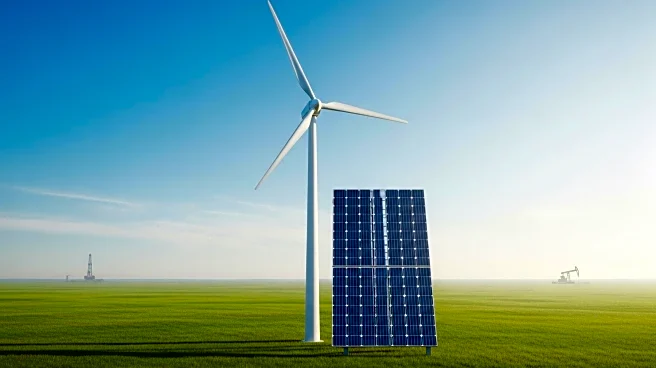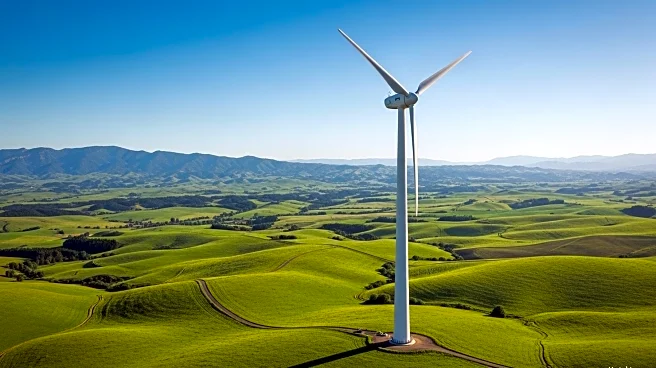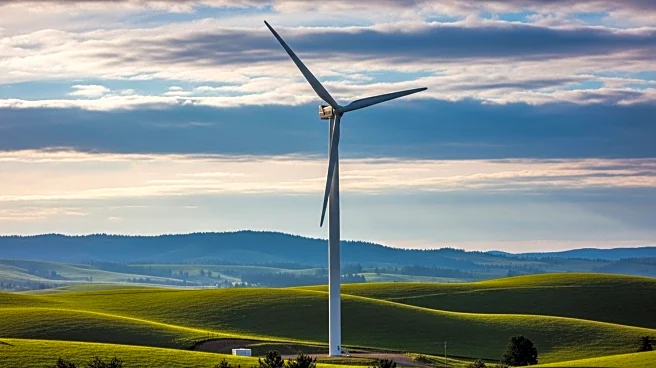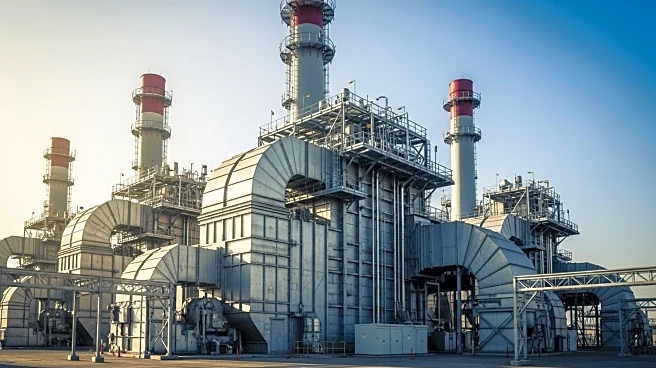What's Happening?
China Energy Engineering Group Co. (CEEC) has proposed a plan to convert retiring coal-fired power plants into nuclear power stations. This 'Coal to Nuclear' strategy aims to utilize existing infrastructure such as land, grid connections, and water access to expedite the construction of new nuclear facilities. China currently has 1.2 TW of coal-fired power capacity, with 100 GW set for retirement in the next five years. The initiative aligns with China's goal of achieving carbon neutrality by 2060. The U.S. has also explored similar conversions, with the Biden administration's 2022 Chips and Science Act supporting the transition of former coal sites to nuclear power generation.
Why It's Important?
The transition from coal to nuclear power is significant for reducing carbon emissions and advancing clean energy goals. China, a major emitter of greenhouse gases, is rapidly expanding its nuclear capabilities, with 58 reactors in operation and 33 under construction. This move could position China as the leading nuclear power generator by 2030, surpassing the U.S. The strategy also supports China's aggressive renewable energy expansion, which includes substantial investments in solar and wind power. The initiative could serve as a model for other countries seeking to balance energy needs with environmental commitments.
What's Next?
The CEEC's plan could span several decades, potentially shifting from fission to fusion technology as advancements occur. Public acceptance and safety concerns will be crucial, especially in densely populated areas. The U.S. may continue to explore similar conversions, with projects like TerraPower's sodium-cooled fast reactor in Wyoming already underway. The success of these initiatives could influence global energy policies and accelerate the transition to cleaner energy sources.
Beyond the Headlines
The coal-to-nuclear strategy highlights the complex interplay between energy infrastructure, technological innovation, and public policy. It underscores the need for transparent communication and public engagement to address safety concerns and enhance societal acceptance of nuclear energy. The initiative also reflects broader trends in energy transition, emphasizing the role of advanced technologies in achieving sustainability goals.











